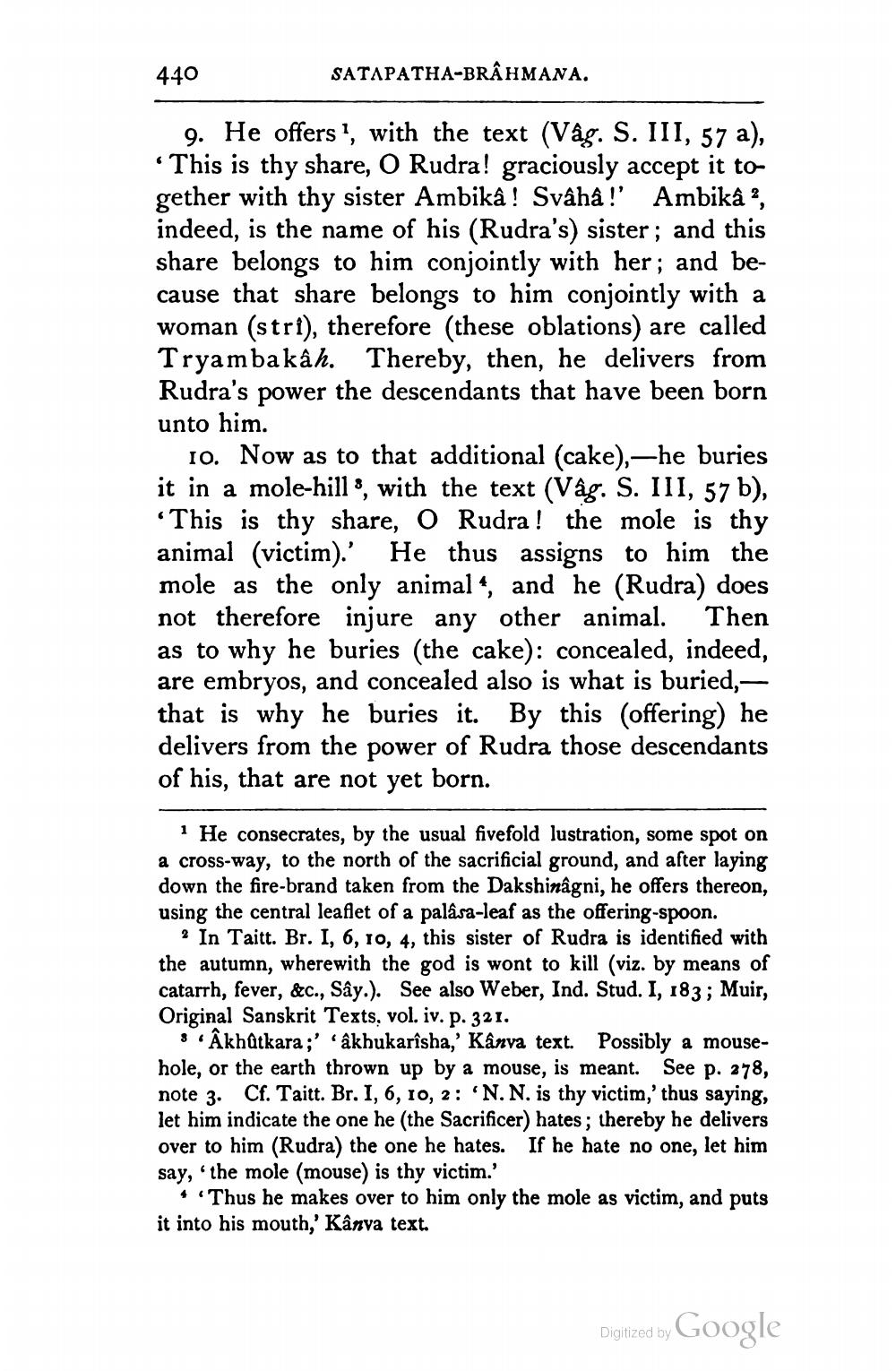________________
440
SATAPATHA-BRAHMANA.
9. He offers !, with the text (Vág. S. III, 57 a), • This is thy share, O Rudra! graciously accept it to gether with thy sister Ambika! Svâhâ !' Ambikâ ?, indeed, is the name of his (Rudra's) sister; and this share belongs to him conjointly with her; and because that share belongs to him conjointly with a woman (stri), therefore (these oblations) are called Tryambakâh. Thereby, then, he delivers from Rudra's power the descendants that have been born unto him.
10. Now as to that additional (cake),—he buries it in a mole-hills, with the text (Vág. S. III, 57 b), *This is thy share, O Rudra! the mole is thy animal (victim).' He thus assigns to him the mole as the only animal“, and he (Rudra) does not therefore injure any other animal. Then as to why he buries (the cake): concealed, indeed, are embryos, and concealed also is what is buried, - that is why he buries it. By this (offering) he delivers from the power of Rudra those descendants of his, that are not yet born.
1 He consecrates, by the usual fivefold lustration, some spot on a cross-way, to the north of the sacrificial ground, and after laying down the fire-brand taken from the Dakshinagni, he offers thereon, using the central leaflet of a palasa-leaf as the offering-spoon.
In Taitt. Br. I, 6, 10, 4, this sister of Rudra is identified with the autumn, wherewith the god is wont to kill (viz. by means of catarrh, fever, &c., Sây.). See also Weber, Ind. Stud. I, 183; Muir, Original Sanskrit Texts, vol. iv. p. 321.
8.Âkhôtkara;' âkhukarîsha,' Kanva text. Possibly a mousehole, or the earth thrown up by a mouse, is meant. See p. 278, note 3. Cf. Taitt. Br. I, 6, 10, 2: N. N. is thy victim,'thus saying, let him indicate the one he (the Sacrificer) hates; thereby he delivers over to him (Rudra) the one he hates. If he hate no one, let him say, the mole (mouse) is thy victim.'
* Thus he makes over to him only the mole as victim, and puts it into his mouth,' Kânva text.
Digitized by Google




